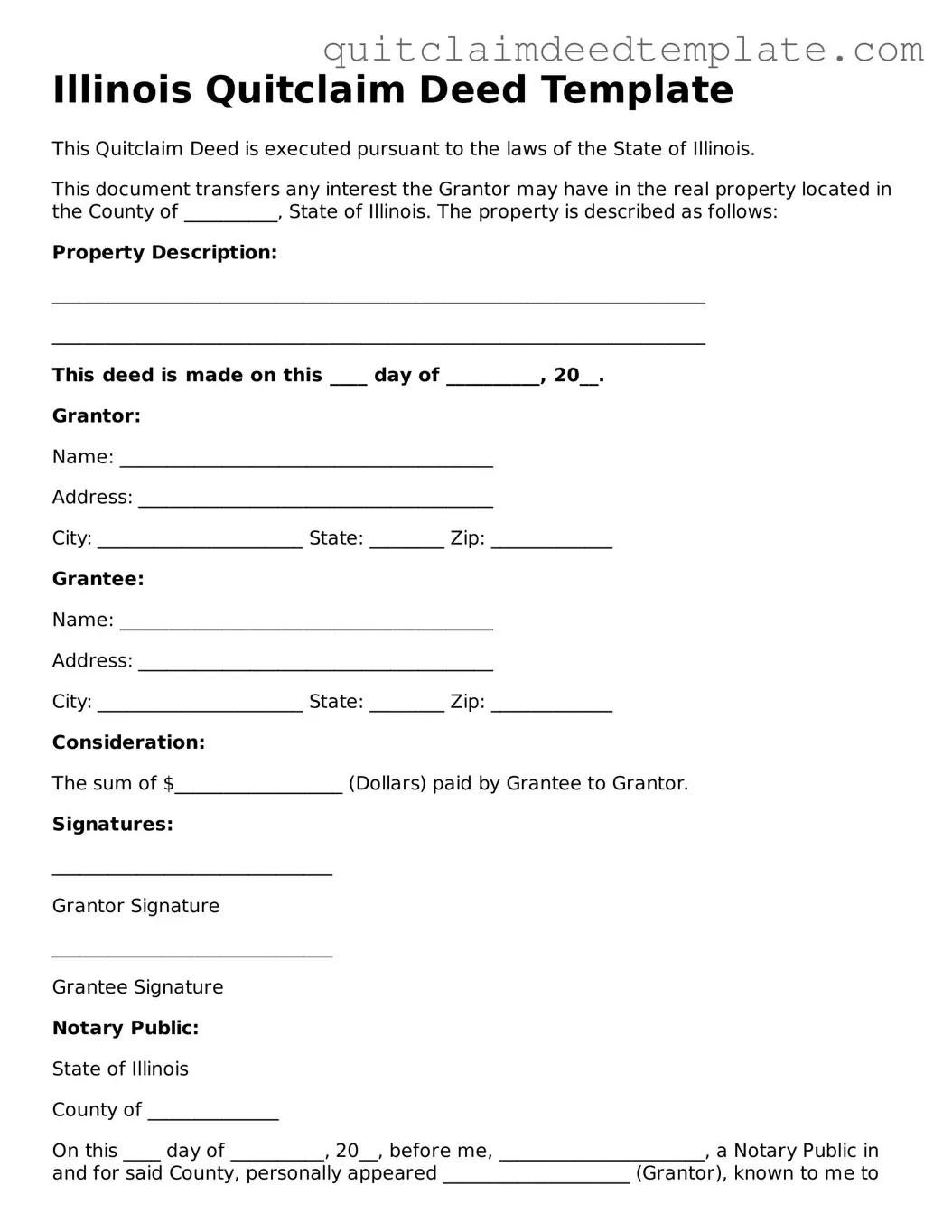Documents used along the form
The Illinois Quitclaim Deed is an important document used to transfer property ownership without guaranteeing the title's validity. However, several other forms and documents often accompany this deed to ensure a smooth transaction and to address various aspects of property transfer. Below is a list of these commonly used documents, each serving a unique purpose in the process.
- Property Transfer Tax Declaration: This form is required to report the sale of real estate to the local taxing authority. It helps determine any applicable transfer taxes and ensures compliance with local regulations.
- Affidavit of Title: This document is a sworn statement by the seller affirming their ownership of the property and disclosing any liens or claims against it. It provides additional assurance to the buyer regarding the property's title.
- Title Insurance Policy: While not mandatory, obtaining a title insurance policy protects the buyer against potential title defects that may arise after the purchase. It offers peace of mind and financial security in case of disputes over ownership.
- Closing Statement: This document outlines all financial aspects of the property transaction, including purchase price, closing costs, and any adjustments. It serves as a comprehensive summary for both parties involved.
- Deed of Trust: In cases where financing is involved, a deed of trust may be used to secure a loan. This document creates a lien on the property until the borrower pays off the loan in full.
- Bill of Sale: If personal property is included in the transaction, a bill of sale may be necessary. This document transfers ownership of personal items, such as appliances or furniture, from the seller to the buyer.
- Power of Attorney: If one party cannot be present for the signing, a power of attorney can authorize someone else to act on their behalf in the transaction. This ensures that all necessary documents can still be executed.
- Notice of Sale: This document informs interested parties, such as tenants or neighbors, that the property has been sold. It may be required in certain situations to provide transparency about the change in ownership.
Understanding these accompanying documents is crucial for anyone involved in a property transaction. Each form plays a vital role in ensuring that the process is completed correctly and that both parties are protected throughout the transfer of ownership.
